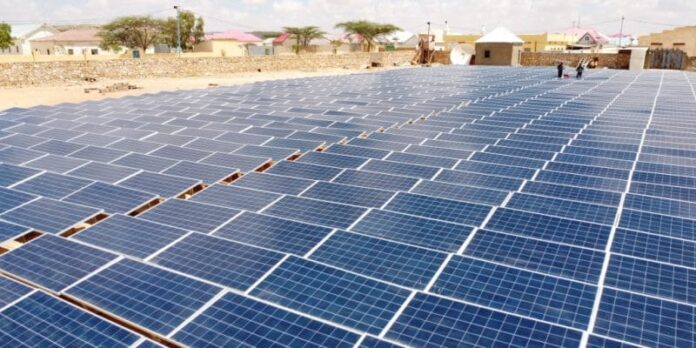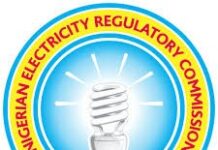The trade war is a fast-moving and chaotic story. At the time of publication, the United States has imposed tariffs of 145 per cent of on most Chinese imports, and China has responded by slapping 125 percent tariffs on U.S. goods. But Washington has carved out exemptions for some items, such as copper, pharmaceuticals, semiconductors, laptops, and smartphones. A Chinese-made lithium-ion battery now faces a tariff at the U.S. border, but putting that battery inside a Chinese-made laptop would exempt it. Washington has also put 25 percent tariffs on steel and aluminum imports from all countries.
The exact rates for various countries and sectors could change quickly, as the White House has proven willing to delay tariffs or grant exemptions to suit the politics of the day.
But despite the flux, the contours of the new U.S. economic landscape are becoming clear, especially for clean energy industries, where China is the dominant global supplier. Below, we address several key questions on how the trade war could affect the U.S. move toward clean energy.
How will Chinese tariffs affect the U.S. clean energy industry?
China is the dominant global manufacturer of nearly all clean energy products, but some U.S. sectors depend much more on China than others.
The Americans who install solar panels won’t be especially worried by the new tariffs—at least not more worried than they already are by U.S. trade barriers. The past decade of U.S. policy on solar imports resembles a game of whack-a-mole: Washington imposes tariffs on Chinese solar producers, who then offshore production to ASEAN countries, who then are hit with levies. Before President Donald Trump’s trade war, the administration of former president Joe Biden had already imposed 50 per cent tariffs on Chinese solar imports, and the major exporters of solar panels and cells were already facing steep duties—for example, 274 per cent on imports from Vietnam, the biggest supplier of solar panel imports in 2024. The Commerce Department had accused exporters in the region of benefiting from unfair subsidies and circumventing U.S. levies on Chinese components. U.S. solar installers have been stockpiling panels to get ahead of these various trade barriers: Analysts estimate the United States has about 50 gigawatts (GW) worth of solar panels in warehouses as much solar capacity as the country added in 2024.
As for manufacturing, U.S. solar has been about halfway reshored thanks to Biden-era industrial policy. The solar industry association announced that it reached its 2030 production target of 50 GW of domestic solar modules—the finished panels that go on roofs or solar farms—five years early. But U.S. weaknesses remain in the U.S. solar supply chain.
The United States still relies on imports for the cells that make up the modules, mostly from Malaysia, South Korea, and Thailand, as well as for the polysilicon that is cut into wafers to put in the cells. U.S. domestic solar cell manufacturing capacity is only about 13 GW: 2 GW of the crystalline solar cells that dominate the world market and about 11 GW from the firm First Solar, which uses an alternative technology that makes it less reliant on foreign trade than its competitors.
First Solar was one of the only renewable companies whose shares gained value after Trump’s initial tariff announcement, though it’s since given up those gains amid the wider stock market decline.
The China tariffs will have a much greater impact on the U.S. battery industry. American utilities have been adding batteries to their grids at record rates, and many of those are lithium-iron-phosphate (LFP) batteries from China. There is essentially no alternative production capacity ready to replace these imports. While Korean and American battery manufacturers are working on indigenizing this tech, the supply chain is not set up to become an immediate substitute.
And electric vehicles (EVs)? Chinese EVs were essentially blocked from the U.S. market due to high tariffs and bans on Chinese software in vehicles imposed by the Biden administration. In 2024, U.S. EV manufacturers were able to meet most of the demand for lithium-ion batteries in vehicles with domestic production. The top issues for them now are not the China tariffs but the global tariffs on steel and aluminum and on certain cars and car parts from Canada and Mexico.
They’ll also be watching for the White House to maintain the tariff exemptions on critical battery metals that come from China, such as lithium and graphite, and hoping that Congress keeps alive the Inflation Reduction Act subsidies that gave U.S. EV manufacturing a boost over the past few years.
Power transformers are another victim of the trade war. These devices change the voltage of electricity, raising it to send electrons over long distances from the power plant to consumers and lowering it for local distribution to toasters and TVs. They’re already in record short supply. U.S. wait times have surged to around two years and prices have nearly doubled since 2020.
The United States imports about 80 per cent of its transformers, mostly from Canada and Mexico. Further tariff hikes on the essential and often underappreciated product, as well as the special steel needed to make them, could hamstring fossil-fueled and renewable power generation alike.
What about fossil fuels?
The United States exported about $13 billion in oil and gas to China in 2024—about 10 per cent of total U.S. exports to China. China receives 5 per cent of the U.S. liquified natural gas exports.
That trade has been blocked by China’s retaliatory tariffs, but finding other buyers will be relatively easy for most oil and gas products, barring certain plastic feedstocks such as ethane.
A much bigger concern for the U.S. oil and gas industry is the collapsing oil price.
WTI Crude, a key benchmark price, has fallen to about $60 per barrel in mid-April, its lowest level since 2021. Amid fears of a global recession, traders are worried that there won’t be enough demand for their product. These prices are lower than the minimum level they need to make drilling new wells profitable, according to their responses to a Dallas Federal Reserve survey.
The oil industry is dealing with more than just low growth expectations. OPEC countries announced a surprisingly large increase in supply on April 3, perhaps in part to appease Trump, who called on the group to bring down the cost of their product. Even if oil imports themselves are exempt from the tariffs, the industry is still dealing with higher costs for the steel it needs for rigs and pipelines. And higher costs for machinery, and lower costs for commodities such as oil or copper, are problems for all sorts of U.S. drillers and miners, including those who want to extract minerals for the energy transition, as Jael Holzman has reported for Heatmap.
Other than tariffs, how else might the trade war affect the clean energy industry?
The other element of the Chinese response has been new export controls new on rare earths such as dysprosium and yttrium, which are used by the U.S. defense industry in radar devices and jet engine coatings. Although the Defense Department keeps some of these rare earths in its National Defense Stockpile, it’s warned that the approximately $1 billion worth of materials it has on hand could only supply “less than 10% of essential civilian demand shortfalls” during a national emergency.
The finished products that contain these rare earths are also subject to export controls. One such product is permanent magnets, which are critical for clean energy manufacturers. These magnets provide the magnetic field that turns the mechanical energy of a rotating wind turbine into electrical energy, or the electrical energy in an EV battery into mechanical energy to turn the vehicle’s wheels.
China accounts for 87 per cent for of global refined rare earth production, whereas the United States is just starting efforts to build up a domestic “mine-to-magnet’ supply chain. The New York Times reports that some Chinese ports have already halted shipments of these magnets, and U.S. factories have concerns about how long their existing supplies can last. It’s a striking example of the imbalance in a trade war between a surplus country (China) that merely loses money and a deficit country (the United States) that loses irreplaceable goods.
What’s the big picture for clean energy?
The key macroeconomic point is economic crises are bad for all sorts of investment, whether a company wants to drill a new oil well or build a new solar farm. Since renewables projects have high up-front costs and zero fuel costs, they are generally more sensitive to high interest rates. One energy transition consulting firm has found a 2 per cent increase in interest rates increases the cost of renewable power by 20 percent—nearly twice as large as the cost increase that a gas plant would face.
Federal Reserve chairman Jerome Powell says he wants to “wait for further clarity” before making any decisions on interest rates. In situations of so-called stagflation, like the 1970s and potentially 2025, monetary policymakers are forced to choose the least bad option.
In any case, the current environment—in which the U.S. stock market and dollar are down, foreign inputs are expensive, and economic uncertainty is higher than during the pandemic or the 2008 financial crisis—is not a favorable one for making large capital investments.
How might China and its clean energy manufacturers be affected?
Tesla responded to China’s retaliatory tariffs by halting new orders in China for the vehicles it produces in California. But the electric vehicle company is one of the rare U.S. clean energy players with a major presence in China.
The United States imported 70 per cent or $16 billion worth of its lithium-ion batteries from China in 2024. That trade relationship is more important for the Americans than for the Chinese. According to data from Center for Research on Energy and Clean Air, the United States receives only 4 percent of China’s EV and solar- and wind-power equipment exports. Nearly half of China’s exports of solar, wind, and EV and battery products go to the Global South. The Chinese people themselves consume most of the batteries they produce, with only 15 per cent of the country’s lithium-ion batteries sent overseas in 2024.
What about other markets?
Leaders such as European Commission President Ursula von der Leyen have expressed concerns that Chinese exports could be rerouted toward Europe. If Americans won’t buy Chinese batteries, Chinese manufacturers could cut prices even further to attract European customers. Only April 10, the German business newspaper Handelsblatt reported that the EC was discussing replacing its tariffs on Chinese EVs with an agreement to set minimum prices for all sales. The EU has previously tried to pressure Chinese EV manufacturers into setting up joint ventures with and transferring technology to European competitors in exchange for access to the EU market. For countries that don’t plan to manufacture batteries themselves, the rerouting of trade could even be a boon as Chinese battery prices fall even further.
What does all this mean for greenhouse gas emissions?
The economic chaos likely will lead to a short-term fall in emissions. That’s because a recession and trade war mean fewer ships on the move, fewer drivers on the roads, less cement and steel going into the ground. Falling prices for oil, gas, and coal recent weeks are a sign that humans may burn less of them this year than previously expected.
What’s bad for the U.S. shale patch is also bad for many oil producers all over the world, from Nigeria to Russia.
However, this would not be the type of durable emissions drop that the climate community hopes for. It would be more like the 5 per cent fall in global CO2emissions in 2020, when much of the world shut down to slow the spread of COVID-19.
That decline was short lived. By 2021, emissions had rebounded to nearly their 2019 levels, and the world had spent vast sums of money and resources dealing with problems more immediate than the constant overheating of the Earth.
The analysts at the energy research firm BNEF expect 2024 to be the year when energy-related CO2 emissions finally peaked.
A recession in 2025 would confirm that projection, but not in a way that gets the world closer to net-zero emissions—it would just make it harder to build a decarbonized economy.
The trade war of 2025 is bad news for nearly all energy sectors, whether clean or dirty.
























